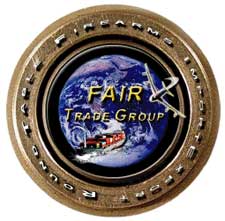

U.S.A. –-(Ammoland.com)- On November 4, 2016, F.A.I.R. Trade Group received a response from the State Department’s Directorate of Defense Trade Controls (DDTC) to our request for clarification of the congressional notification requirements related to certain defense articles controlled in U.S. Munitions List (USML) Category I, specifically parts, components and attachments listed in Cat. I(e)-(g). The full Advisory Opinion request and DDTC’s reply are available on F.A.I.R.’s website.
In its reply, dated October 27, 2016, DDTC advised that the $1 million congressional notification threshold applies to firearm parts and components in USML Cat. I(e), and (g) in the same manner as it applies to fully assembled firearms listed in USML Cat. I(a), (b), (c) and (d). Cat. I(e) lists firearm silencers, mufflers, sound and flash suppressors and their “specifically designed,” modified or adapted components and parts. Cat. I(g) lists firearm barrels, cylinders, receivers (frames) or complete breech mechanisms.
In its correspondence, DDTC walks through an analysis of the controlling statute, the Arms Export Control Act (AECA), the implementing regulations known as the International Traffic in Arms Regulations (ITAR), and the agency’s own guidance to justify its policy.
First, DDTC points out that the controlling statute, the AECA, does not define the term “firearm.” The implementing regulations, however, do explain the term “firearm” in USML Category I paragraph (j). Regardless, DDTC chooses not to rely on the ITAR, stating that the defined term found in the ITAR applies only to the Regulations and cannot be used to shed light on what is meant by the term “firearm” within the AECA.
F.A.I.R. wishes to point out that the AECA requires certification to Congress before an export license is issued for a defense article that is a “firearm controlled under category I of the United States Munitions List” when the value is $1 million or more. The AECA does not define “firearm,” but industry should be able to reasonably rely on the interpretations the State Department has listed in USML Cat. I(j) as explaining the phrase “defense article that is a firearm controlled under category I of the USML.” Indeed, USML Cat. I(j) states: “The following interpretations explain and amplify the terms used in this category and throughout [the ITAR].” The first interpretation put forth in USML Cat. I(j) is what constitutes a firearm (“a weapon not over .50 caliber which is designed to expel a projectile by the action of an explosive or which may be readily converted to do so.”).
Rather than pointing to a clear requirement in either the statute or regulations, DDTC relies solely on prior legal and policy review and a “long-standing practice” of notifying Congress to support its interpretation that the $1 million threshold applies equally to parts and attachments listed in paragraphs (e), and (g). DDTC does not articulate what the prior review entailed, and does not address the fact that such interpretation is in direct conflict with the regulations. DDTC does explain, however, that the statutory requirement to notify “firearms” valued at $1 million or more could “reasonably be interpreted” to extend to firearm parts, components and attachments identified in USML Cat. I(e) and (g) because of the “treatment” of the term “firearm” in other statutes and regulations.
This policy of applying the $1 million threshold to parts and attachments also conflicts with DDTC’s own guidance. In response to this conflict, DDTC explains that “any instruction in the Firearms Guidelines does not supersede the statutory notification requirement.” While this statement is accurate in the sense that interpretive guidance does not have the force of law, we question why DDTC would publish instructions and guidance for industry that does not reflect what the agency believes are the requirements of the ITAR and AECA. If industry cannot rely on DDTC’s own guidance to be an accurate representation of what is required by law and regulation, the challenges present in ensuring compliance with complex regulations has now increased exponentially.
DDTC’s reply should be concerning to all exporters, not just the firearms industry. DDTC’s response provides insight on how DDTC regards the interpretive guidance it provides, which directly impacts its other industry guidelines, as well as interpretive definitions found in the ITAR. If industry is not able to rely on the accuracy of DDTC’s guidance, how is industry to remain compliant? If the definitions provided in the ITAR itself are in conflict with the underlying statute that the ITAR enacts, how is industry to know how to interpret the regulations when they now have cause to question the accuracy of DDTC’s published guidance?
About: The F.A.I.R. Trade Group is a 501(c) (6) organization dedicated since 1994 to protecting the interests of the firearms and ammunition import and export community. F.A.I.R. operates entirely on the funds derived from our dues-paying membership. If you are interested in becoming a member or contributing to the organization, please visit our website at: www.fairtradegroup.org.
